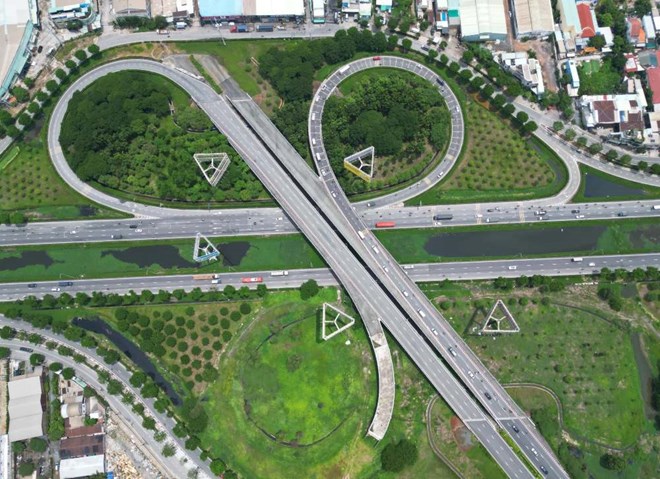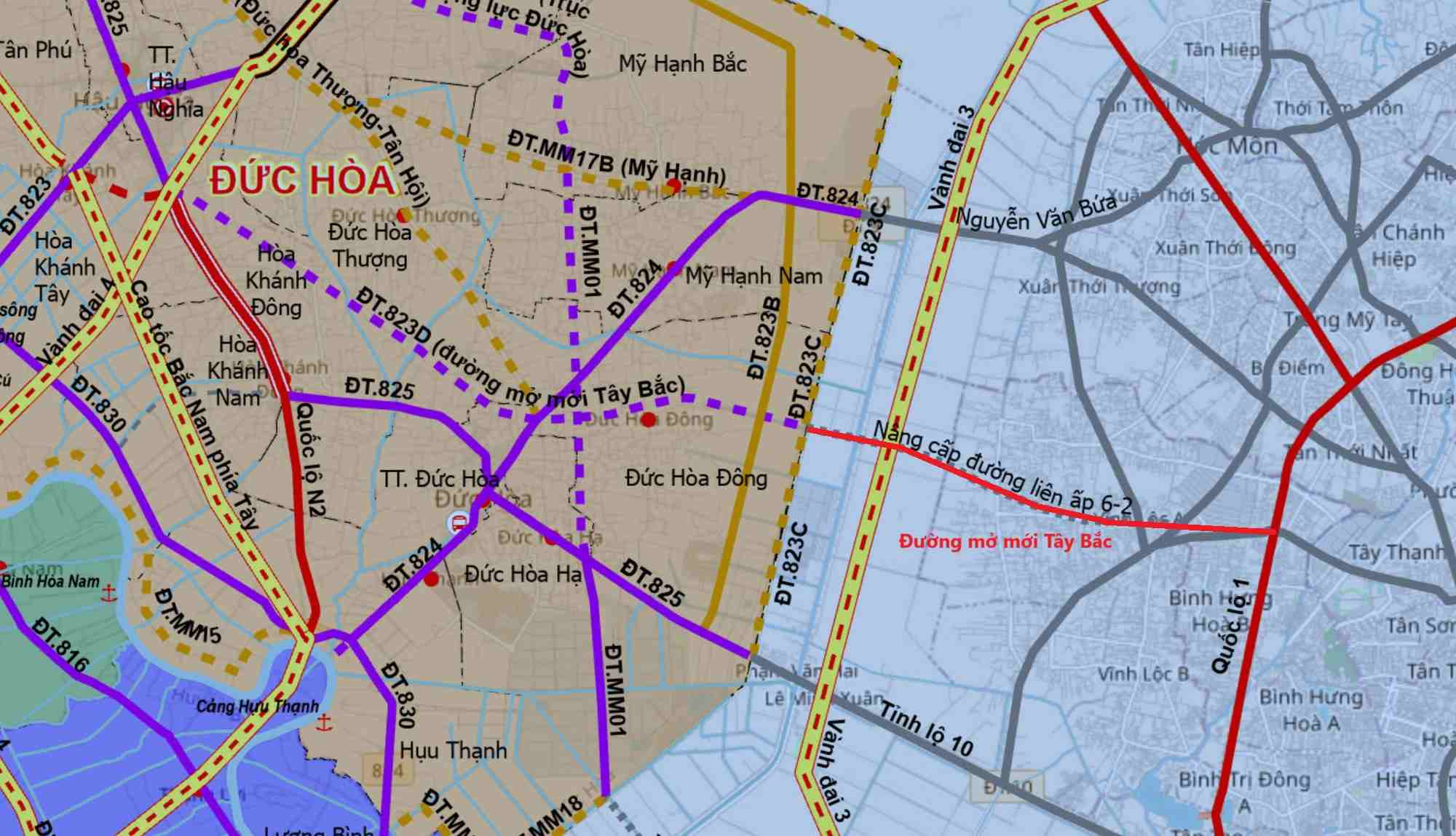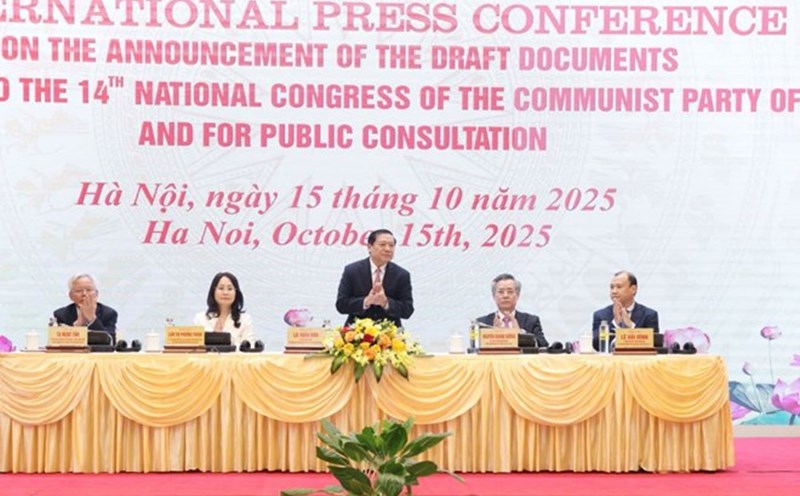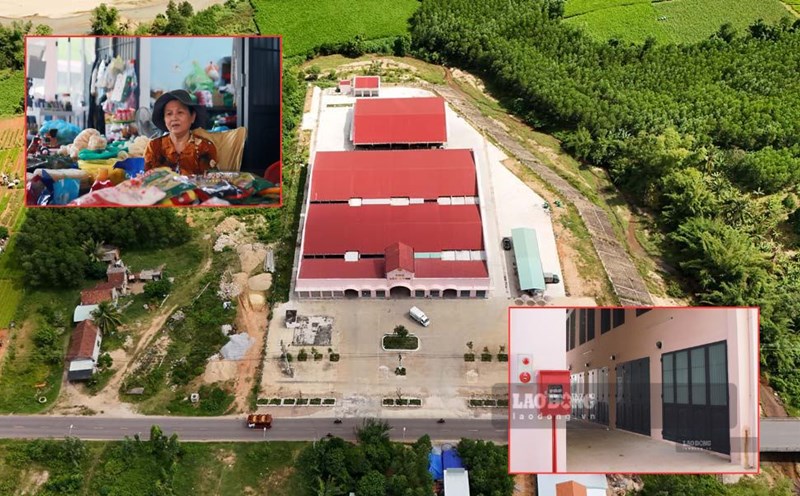According to the Resolution of the 1st Ho Chi Minh City Party Congress, the city will focus on investing in synchronous infrastructure, increasing regional connectivity with Dong Nai, Tay Ninh, Dong Thap and Lam Dong provinces.
To connect with Tay Ninh province, Ho Chi Minh City will build an East-West axis road (Vo Van Kiet) extending from National Highway 1 to the Tay Ninh provincial border (after merging Long An) and a new Northwest road (from Ring Road 2 to the Tay Ninh provincial border after the merger).
Currently, Vo Van Kiet Street is 13 km long, 60 m wide, running from Calmette Bridge (formerly District 1) to National Highway 1 (formerly Binh Chanh District). This is a smooth artery from the center to the western gateway, contributing to changing the face of Ho Chi Minh City's traffic when it opened to traffic in 2009.
According to the Ho Chi Minh City Department of Construction, the project to extend Vo Van Kiet Street to Tay Ninh border is nearly 15 km long, divided into 3 sections:
Section 1: From the National Highway 1 overpass to the Tan Tao - Cho Dem intersection (Vo Tran Chi Street), 2.7 km long. This section was previously implemented under the BOT form but has been suspended.
Section 2: From Tan Tao - Cho Dem to Ho Chi Minh City Ring Road 3, 6.6 km long.
Section 3: From Ring Road 3 to Tay Ninh border, 5.3 km long, coinciding with the starting point of route DT.823D.

The route is 60 m wide, with a maximum speed of 80 km/h for motor vehicles and 60 km/h for mixed lanes.
A series of river-crossing bridges will be built on the route including Cai Trung, Hung Nhon, Lang Le - Bau Co, Kenh A, An Ha - Xang An Ha, along with the Ho Chi Minh City Ring Road 3 intersection to help connect the regional traffic network.
The total estimated investment capital is VND 19,400 billion, of which site clearance accounts for more than VND 12,800 billion, construction and installation are about VND 3,769 billion,...
When completed, the route will relieve traffic pressure in Binh Chanh and Duc Hoa areas, reducing the load on Tran Van Giau - Provincial Road 10 axes.
At the same time, the route connects with Duc Hoa dynamic axis, so going to the center of Ho Chi Minh City via Vo Van Kiet Street is very convenient; contributing to improving the ability to transport goods from industrial parks in the area to important ports in Ho Chi Minh City and Tay Ninh after the merger.

Along with the extension of Vo Van Kiet Street, Ho Chi Minh City will invest in a new Northwest route of nearly 10 km long, 40 - 60 m wide, connecting Ho Chi Minh City Ring Road 2 (National Highway 1) through Vinh Loc Industrial Park to DT.823D Road (Tay Ninh).
On the route, the section through the intersection with Ho Chi Minh City Ring Road 3 is also invested synchronously to increase connectivity and promote the effectiveness of the works. The project has a total investment of about VND 8,800 billion.
When completed, this route will connect 3 strategic belt routes: 2, 3 and 4, forming a new urban - industrial development axis in the Northwest region.
This has significantly reduced congestion in the Hoc Mon - Binh Chanh - Duc Hoa area, where many industrial parks, warehouses, and logistics centers are concentrated.











